Tourism News
Myrtle Beach Sand vs. Sand from Around the World
Myrtle Beach sand is different from sand from other places in the world. It may not appear so when viewed with the naked eye, but when you use a microscope to compare sand from Myrtle Beach to what’s found in other areas of the world, the differences are undeniable.
Myrtle Beach is known for its white-sand beaches that stretch on for more than 60 miles along the Grand Strand. This token white coloring comes from a high quartz content and calcite from shells. Moving closer to the ocean, the color deepens slightly as additional minerals become more prevalent.
The fine texture and soft feel of Myrtle Beach sand are major draws for visitors looking to spend the day strolling the coastline or lounging on the shore. Though shells do wash ashore, there are no rivers or inlets draining onto the sand, so there are fewer organisms in the mix. Wind and waves eventually grind these deposits into rounded fragments, and the sea shells that do remain are treasures for beachcombers.
Though the sand at Myrtle Beach is plenty deep for digging your toes into, the surface is relatively thin, geologically speaking, so you’ll see the hard bottom in areas just offshore and other exposed rocky platforms near piers and in shallow areas.
These are just a few of the things that make Myrtle Beach sand different. To find out more on a scientific level, we teamed up with professors George Boneillo (who was gracious enough to provide us with the images below), Angelos Hannides, and Mandy Staughton from Coastal Carolina University. The professors, who are experts in Marine Science, shared their personal samples of sand with us from Myrtle Beach, Costa Rica, Bermuda, Hawaii, and the Arabian Sea.
Check out these amazing photos of sand from across the globe and read on to learn characteristics of each sandy shore:
The Kind of Sand at Myrtle Beach
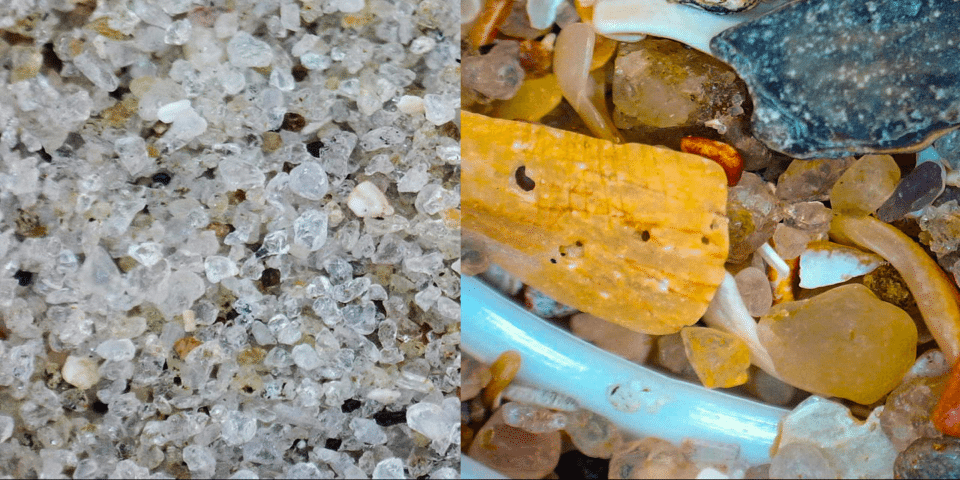
Myrtle Beach sand has a varied composition of quartz, other minerals, and shell, depending on its source. The team at CCU presented two samples of Myrtle Beach sand collected downtown near the iconic Skywheel; one was retrieved near the dunes and the other was taken near the water.
The first sample (pictured left) came from the dunes. The sand by the dunes seems to be of a fine texture, but as viewed under a microscope, it appears predominantly composed of quartz. We can tell this due to the large number of clear/glassy particles. The quartz in the sand was deposited on our beaches from the Appalachian Mountains, which release this mineral as they erode. Because quartz resists weathering, large quantities of this mineral can be found in Myrtle Beach sand. The CCU sample also contained small bits of shells as well as browning due to a rusting effect from iron. This sample appears to be finer than the second sample because the wind by the dunes acts as a filter and sorts out the finer grains of sand.
The sample taken by the water (pictured right) appears much different, as it is coarser and contains bigger pieces of shells. This results from the higher energy where the waves break, causing larger particles of sand. The sample contains a mix of broken rocks as well as the shells and bodies of previously living organisms. Items that make up this sample of sand include but are not limited to quartz, mica, bivalves/clams, magnetite, and more.
Sand from Costa Rica
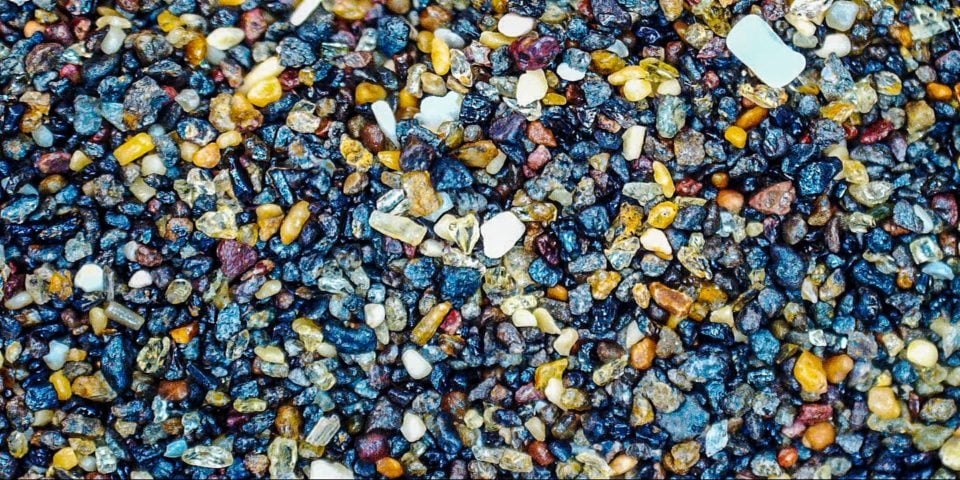
Over 3,500 miles southwest of Myrtle Beach is the Central American country of Costa Rica, famous for its sand, volcanoes, and tropical wildlife. The sand here is vastly different from that of Myrtle Beach due to differing environmental factors. Because there is a lot of volcanic activity in Costa Rica, the sand is rife with particles from volcanic/igneous rocks. The sand also features a lot of the magnetic mineral magnetite. These two factors combined explain why the color of sand in Costa Rica is much darker than Myrtle Beach sand.
Sand from Bermuda
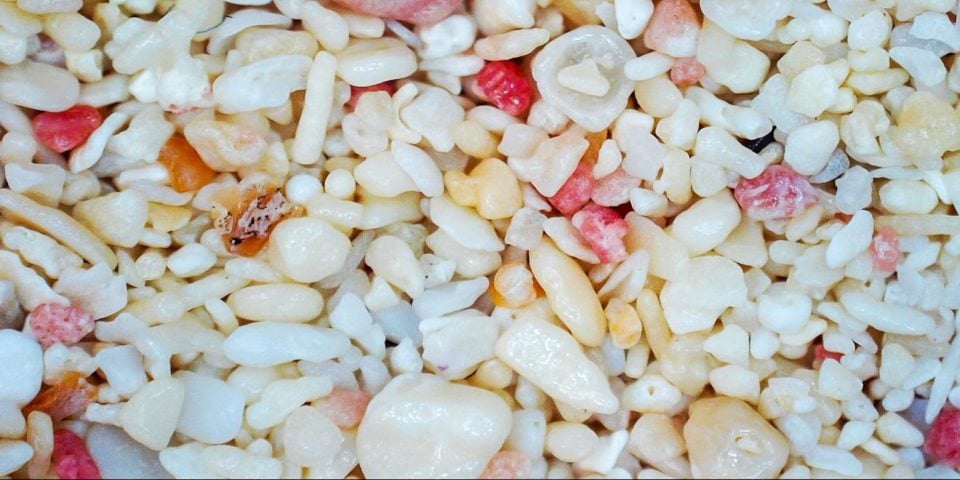
The sand from Bermuda appears to be from a different universe than Myrtle Beach sand. The beautiful pinkish-white hue is aesthetically pleasing both to the naked eye and as viewed under a microscope. While the sand is fine, under a microscope it looks coarse due to the large amount of shell material. The pink color comes from a microscopic organism called foraminifera, which dies on the ocean floor, mixes with bits of coral and shells, and gets washed up on shore, giving Bermuda sand its signature pink hue.
Sand from Hawaii
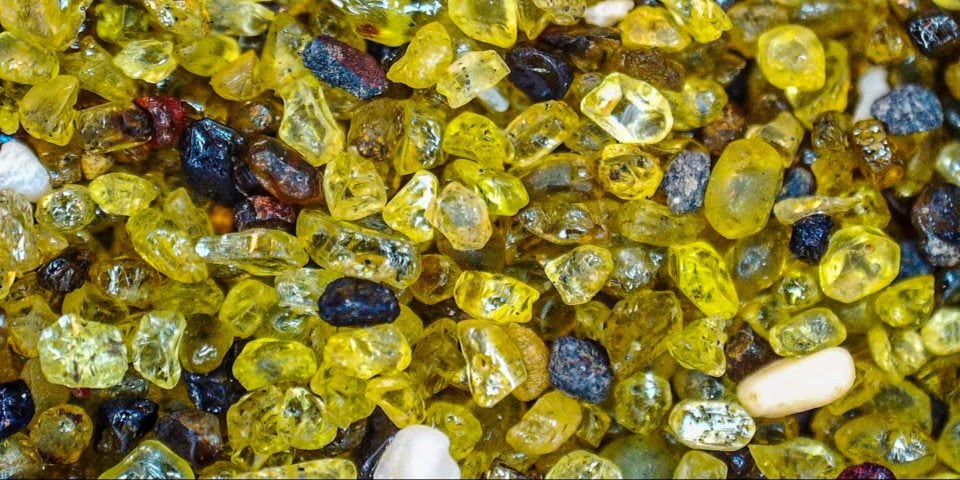
The sample from Hawaii looks like gems upon first glance through a microscope, but it is primarily made up of a green, glassy mineral called olivine. This mineral is prevalent in the sample due to salt breaking down volcanic/igneous rock in the area, but other Hawaiian beaches likely also feature similar volcanic rock and parts of shells—a much coarser makeup than Myrtle Beach sand.
Sand from the Arabian Sea
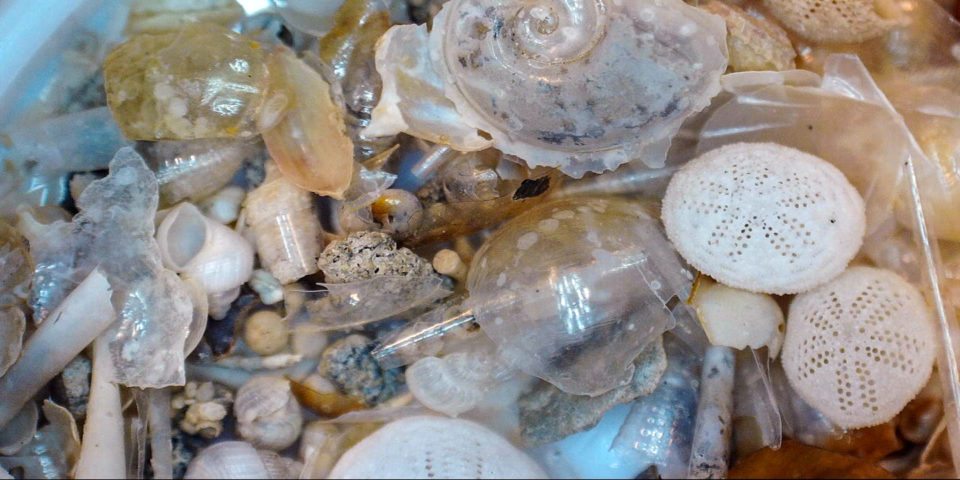
Perhaps the most stunning sand sample provided by the team of professors at CCU is the one from the Arabian Sea. This collection, taken from the Continental Shelf, was passed through a sieve to get rid of the small pieces of sand. What was left included bodies of organisms and shells, which can be seen in the photo. The abundance of marine life in the sand results from a bounty of essential nutrients the river that deposits into the sea provides for these creatures to thrive.
Plastics in Sand
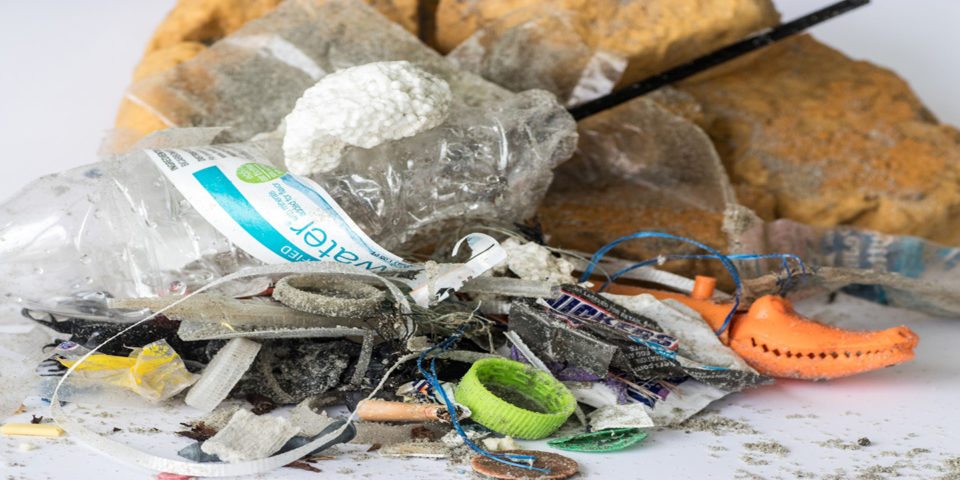
One similarity Myrtle Beach sand shares with the samples from around the world is the impact plastic makes on the beaches and water quality. While sand acts as a filter to help sort plastic and other contaminants out of our water, it is impossible to stop them completely. The team of professors at CCU collects samples from different parts of the world each year to study the effect of plastics on our coasts. The plastics they find come from everyday items, ranging from plastic bottles to fibers worn off of yoga pants or other clothing.
When plastics are left behind on the beach or in the water, they photodegrade in the sun, meaning they break down into smaller particles that microscopic organisms eat. These pieces of plastic make their way up the food chain, eventually reaching the seafood humans consume. This is why it is important for us to take action and try to keep litter off of our beloved beaches to make less of a negative impact on our environment. Do your part and help keep the sand and water of Myrtle Beach and other beaches clean!
Frequently Asked Questions
What color is Myrtle Beach sand?
Myrtle Beach sand is white, thanks to its makeup of quartz and calcite from shells. This light coloring gives the area the token white-sand beaches it’s known for.
Is the sand at Myrtle Beach soft?
Yes, the sand at Myrtle Beach is known for its soft, silky texture. Wind and waves grind the quartz and other minerals in the sand into small, rounded fragments that feel soft to the touch.
How deep is the sand at Myrtle Beach?
The sand at Myrtle Beach ranges from one foot in depth to many, depending on the location, recent storms, and the season. Occasionally you’ll see rocks exposed along the shoreline or near piers where the sand has been washed away.
All photos taken by CCU professor, George Boneillo.


